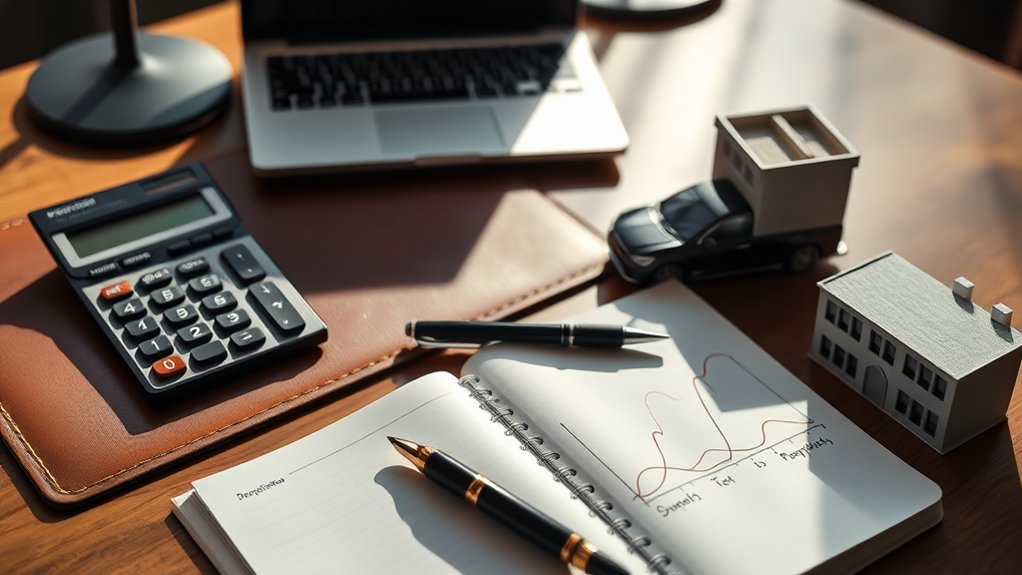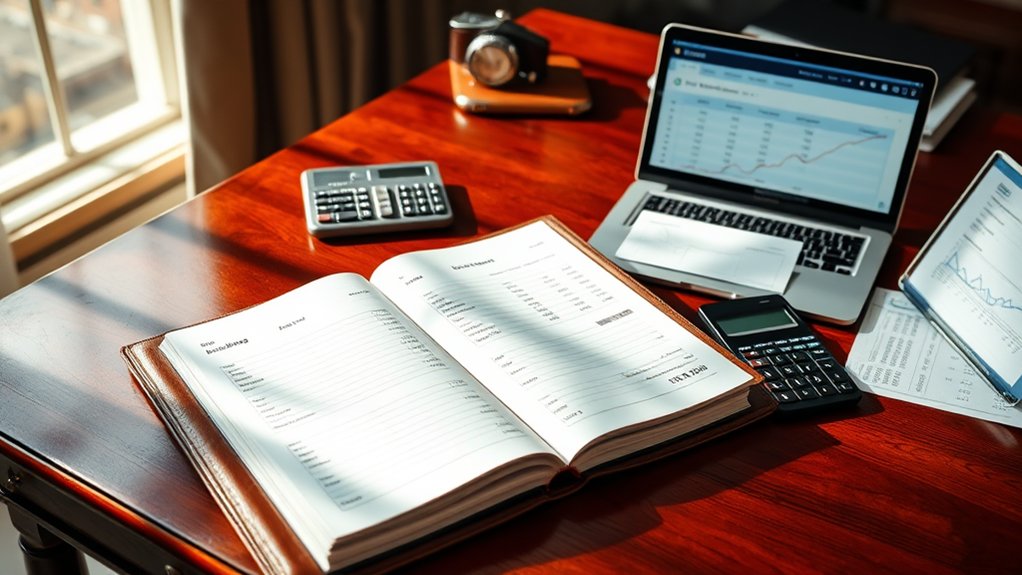Depreciation and amortization are accounting methods I’ll explain that help you track how your assets lose value over time. Depreciation applies to tangible assets like equipment and vehicles, while amortization covers intangible assets such as patents and trademarks. Both methods systematically allocate costs across an asset’s useful life, impacting your financial statements and tax planning. Understanding these concepts will strengthen your grasp of essential bookkeeping practices and strategic financial decisions.
Understanding the Basics of Depreciation

Depreciation represents the systematic allocation of an asset’s cost over its useful life, reflecting the gradual decrease in value due to wear, tear, and obsolescence. I’ll explain how you can leverage depreciation to optimize your financial reporting and tax benefits.
You’ll typically apply one of four methods: straight-line, declining balance, sum-of-years-digits, or units of production. Each method strategically distributes the asset’s cost differently. When I calculate depreciation, I consider the asset’s initial cost, salvage value, and estimated useful life. I recommend matching the depreciation method to your business objectives, as this choice impacts your balance sheet, income statement, and tax obligations.
Key Differences Between Depreciation and Amortization
While both concepts involve allocating costs over time, amortization differs fundamentally from depreciation in several key aspects. I’ll show you how amortization typically applies to intangible assets like patents and copyrights, while depreciation focuses on tangible assets like equipment and buildings. You’ll find that amortization usually follows a straight-line method, whereas depreciation can use various methods including declining balance. I emphasize that amortized assets generally have a finite legal or contractual life, while depreciated assets have an estimated useful life based on wear and tear or obsolescence.
Common Methods for Calculating Depreciation

How do businesses determine the most appropriate method for spreading asset costs across multiple accounting periods? I’ll explain the four primary depreciation methods used in modern accounting.
Straight-line depreciation divides an asset’s cost evenly over its useful life. Declining balance applies a higher depreciation rate in earlier years. Sum-of-the-years’-digits creates a more accelerated write-off schedule based on yearly fractions. Units-of-production ties depreciation directly to asset usage rather than time.
I recommend selecting your method based on the asset’s expected value decline pattern and your company’s financial objectives. Each approach impacts your balance sheet and tax positions differently.
Applying Amortization to Business Assets
Similar to how physical assets decline through depreciation, intangible assets require systematic cost allocation through amortization. I’ll show you how to apply amortization to your patents, copyrights, trademarks, and other intangible assets. You’ll need to determine each asset’s useful life, calculate its annual amortization expense by dividing cost by lifespan, and record monthly journal entries to reflect the declining value.
I recommend using the straight-line method for most intangibles, as it’s widely accepted and straightforward. You’ll debit amortization expense and credit accumulated amortization, maintaining clear documentation for tax purposes and stakeholder reporting.
Impact on Financial Statements and Tax Planning

The impacts of depreciation and amortization extend far beyond basic accounting entries to extensively influence a company’s financial statements and tax planning strategies. I’ll explain how these methods affect your balance sheet, income statement, and tax liability.
On your income statement, I’ll show you how depreciation reduces reported earnings, potentially lowering your tax burden. You’ll see how these non-cash expenses increase your company’s cash flow while decreasing your taxable income. Through strategic timing of asset write-offs, you can optimize your tax position and maintain strong financial ratios that impress stakeholders and lenders, ultimately strengthening your company’s market position.









